showing entries tagged "Financial"
by: IAMT
Learn to Spend, Save and Give
For most people, spending comes naturally. Saving up for something special is harder. And setting money aside for giving is really hard.
by: IAMT
What does it mean to be a credit union member?
Even though there are over 5,000 credit unions in the United States, many misconceptions about their structure and their services still exist. One popular-but-false assumption is that the term “credit union member” is interchangeable with the term “credit union customer.” It might seem like a harmless mistake, but the concept of membership is what sets credit unions apart from other financial institutions. A “member” isn’t an empty marketing term—it reflects your credit union’s commitment to co-operative values and shapes your entire banking experience. As a member, you’re a part owner, you have a say in how your credit union is run and you get to share in its success in tangible ways.
by: IAMT
Why Do People Borrow Money?
Borrowing money comes at a cost. This extra cost is called interest. If borrowing money costs more, why do people still do it? Here are three reasons why:
Choosing your financial institution
by: banzai
Recognizing and Avoiding Scams
Con artists cheat Americans out of billions of dollars every year. Recognizing red flags for potential scams can help protect you, your loved ones, and your hard earned cash.
by: Savvymoney
5 Financial New Year’s Resolutions
Keeping Your Money Safe
Imagine this: you are out for a walk and you find a stack of shiny gold bars. Where do you put your treasure to keep it safe?
5 Identity Theft Jackpots (and How You Can Safeguard Against Them)
Identity theft is nothing new, and yet it still manages to cost its victims billions of dollars (yes, that’s billions with a “b”) globally each year—not to mention the time and hassle involved in recovering a stolen identity.
by: Banzai
Credit Score
A credit score is a number that potential lenders will use to determine whether they should lend you money, how much, and at what interest rate.
by: Guest
Should You Think About Changing Financial Professionals?
You rely on your financial professional to provide experience and expertise to help develop a practical financial plan for you, manage debt and establish an emergency fund, weather market volatility, create a budget, grow your assets, save for the life you want, and invest and plan for retirement — and more.



